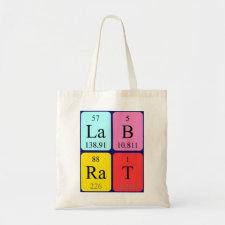
Authors: Murkovic M
Article Title: Analysis of heterocyclic aromatic amines.
Publication date: 2007
Journal: Analytical and Bioanalytical Chemistry
Volume: 389
Issue: (1)
Page numbers: 139-146.
DOI: 10.1007/s00216-007-1306-z
Abstract: Heterocyclic aromatic amines are formed in protein and amino acid-rich foods at temperatures above 150 ░C. Of more than twenty heterocyclic aromatic amines identified ten have been shown to have carcinogenic potential. As nutritional hazards, their reliable determination in prepared food, their uptake and elimination in living organisms, including humans, and assessment of associated risks are important food-safety issues. The concentration in foods is normally in the low ng g-1 range, which poses a challenge to the analytical chemist. Because of the complex nature of food matrixes, clean-up and enrichment of the extracts are also complex, usually involving both cation-exchange (propylsulfonic acid silica gel, PRS) and reversed-phase purification. The application of novel solid-phase extraction cartridges with a wettable apolar phase combined with cation-exchange characteristics simplified this process¨both the polar and apolar heterocyclic aromatic amines were recovered in one fraction. Copper phthalocyanine trisulfonate bonded to cotton ("blue cotton") or rayon, and molecular imprinted polymers have also been successfully used for one-step sample clean-up. For analysis of the heterocyclic aromatic amines, liquid chromatography with base-deactivated reversed-phase columns has been used, and, recently, semi-micro and capillary columns have been introduced. The photometric, fluorimetric, or electrochemical detectors used previously have been replaced by mass spectrometers. Increased specificity and sub-ppb sensitivities have been achieved by the use of the selected-reaction-monitoring mode of detection of advanced MS instrumentation, for example the triple quadrupole and Q-TOF instrument combination. Gas chromatography, also with mass-selective detection, has been used for specific applications; the extra derivatization step needed for volatilization has been balanced by the higher chromatographic resolution
Template and target information: Review - analysis of heterocyclic aromatic amines
Author keywords: Heterocyclic aromatic amines, HPLC, Mass-selective detection, electrochemical detection, fluorescence detection, clean-up



Join the Society for Molecular Imprinting

New items RSS feed
Sign-up for e-mail updates:
Choose between receiving an occasional newsletter or more frequent e-mail alerts.
Click here to go to the sign-up page.
Is your name elemental or peptidic? Enter your name and find out by clicking either of the buttons below!
Other products you may like:
 MIPdatabase
MIPdatabase









